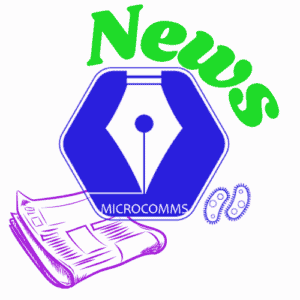The month of October in artist’s circles means Inktober – which is a month of artists creating artwork on daily prompts. This year it reached a new level with the new campaign Microber and it has been an absolute blast to follow science artists vision of the microbial world.
#Microber2021 day 31 – monstrous
— Noémie Matthey @NoemieMatthey@vis.social (@NoemieMatthey) October 31, 2021
Group A Streptococcus can cause flesh-eating disease, also called necrotizing fasciitis.
Through four genetic diversification events, a harmless bacterium became a flesh-eating monster, causing epidemic human infections worldwide…#sciart pic.twitter.com/UaQho6lPxi
While there was so much amazing Microber #SciArt tweeted every day, one of my favourites was probably the illustration of a German teacher explaining bacterial conjugation.
When the German teacher is asked to sub in Biology #Microber2021 pic.twitter.com/fqEkkLqu9D
— CTMR (@CTMRBio) October 30, 2021
For microbe lovers: More than just Microber!
As a microbe lover yourself, I’m sure you cannot highlight the amazing things microbes do for us enough. And since microbes are involved in so many activities in our lives, many celebration days throughout the year are only possible thanks to microbial activity. This is why on the #FEMSmicroBlog, we published a post about days that celebrate some kind of microbial superpower. Just think of International Coffee Day or World DNA Day!
And one bacterial superpower, we could actually use to save us from viral infections. How? As we discuss in a BacterialWorld post, the bacterium Wolbachia pipientis lives in insects like mosquitoes. And within these insects, the bacteria compete with viral intruders like the Zika, Dengue or Yellow Fever viruses. Like this, Wolbachia keeps mosquitos virus-free, so that they cannot transfer the virus to us anymore when they bite us. This means that Wolbachia also protects us from these viruses; thanks bacteria!
For academics
Sometimes teaching microbiology can be a bit tough. This is why Dr Isabel Murillo created her own Microbial Pursuit Game to teach microbiology knowledge in a fun environment of playing a game. We talk more about this exciting project on the #FEMSmicroBlog.
For science communicators
If you are a budding science communicator, then let me tell you that I know how starting a science communication project can be quite overwhelming. This is why I have two huge treats for you.
In the post “How to get started in science communication“, I walk you through the single steps of how to get started in this exciting field. Together, we will identify your superpower – that is your skill which you will use to communicate science. Then, I recommend that you craft that skill and produce exciting scicomm content that you publish on your own platform. And please let me know what else you need to get started with science communication.
Second, once you started your science communication project, make sure to organise all your tasks, posts and social media posts. For this, I highly recommend Notion as I explain in “How Notion can help you organise your writing and blogging projects. To get started with Notion, I created a free template for you to keep track of all your science communication projects as well as any other tasks you have on your plate.
Over the last weeks, I was a bit unhappy with how you can access the guides from my website as the system did not work as smoothly as I wanted it to. So, I decided to give out my FREE guide on how to start a science blog directly on the website.
This was it for this month, I hope you’re all safe and keep talking about your research and science!

